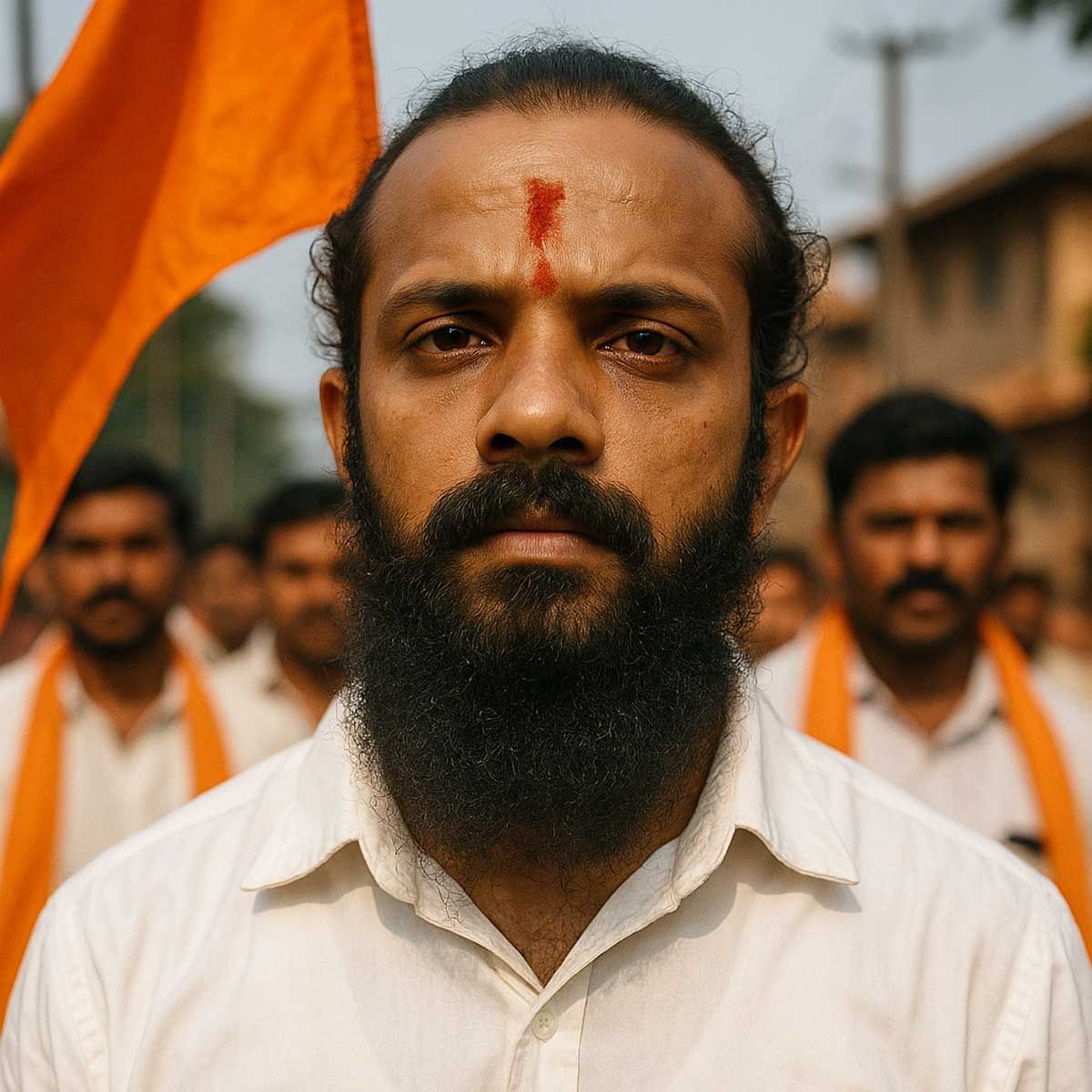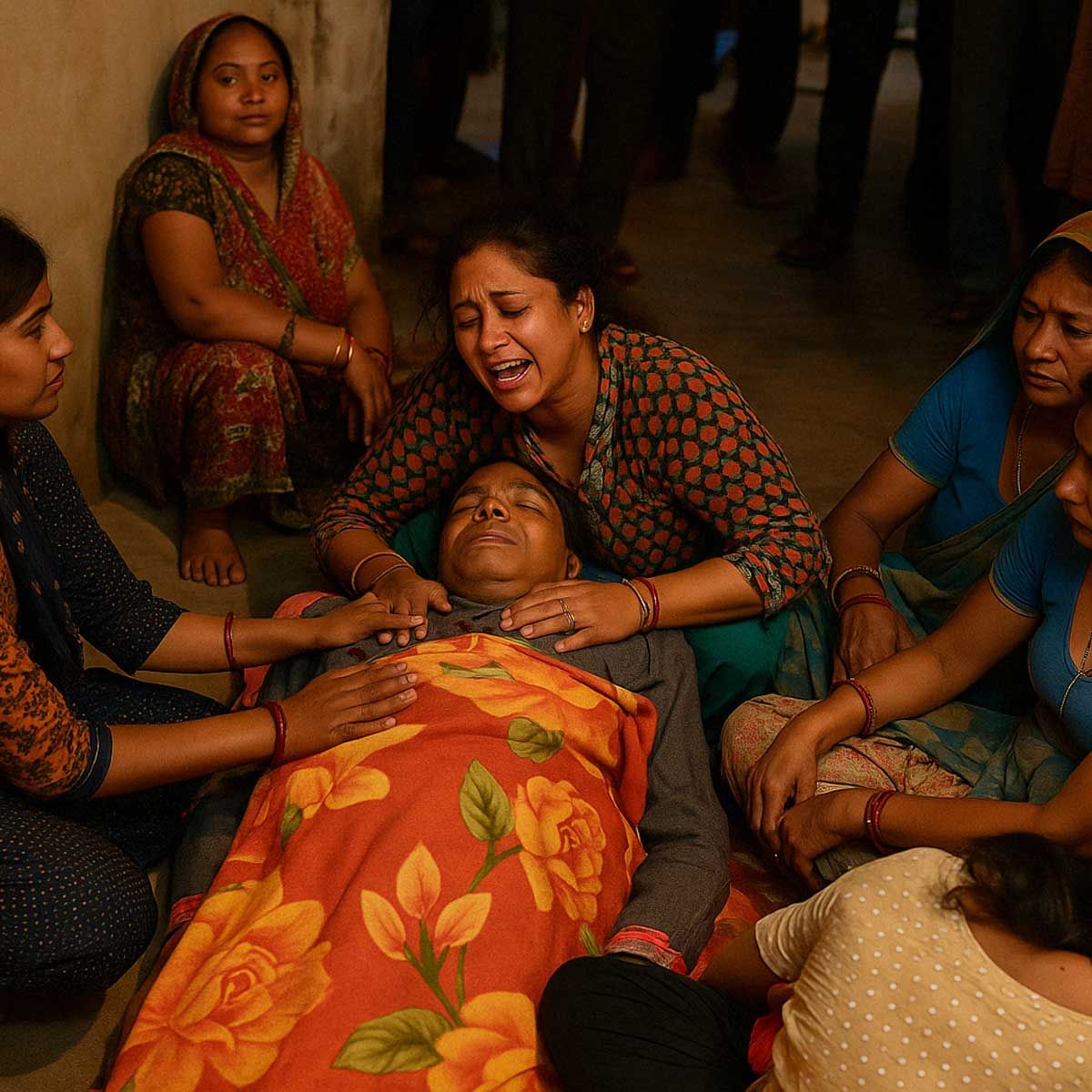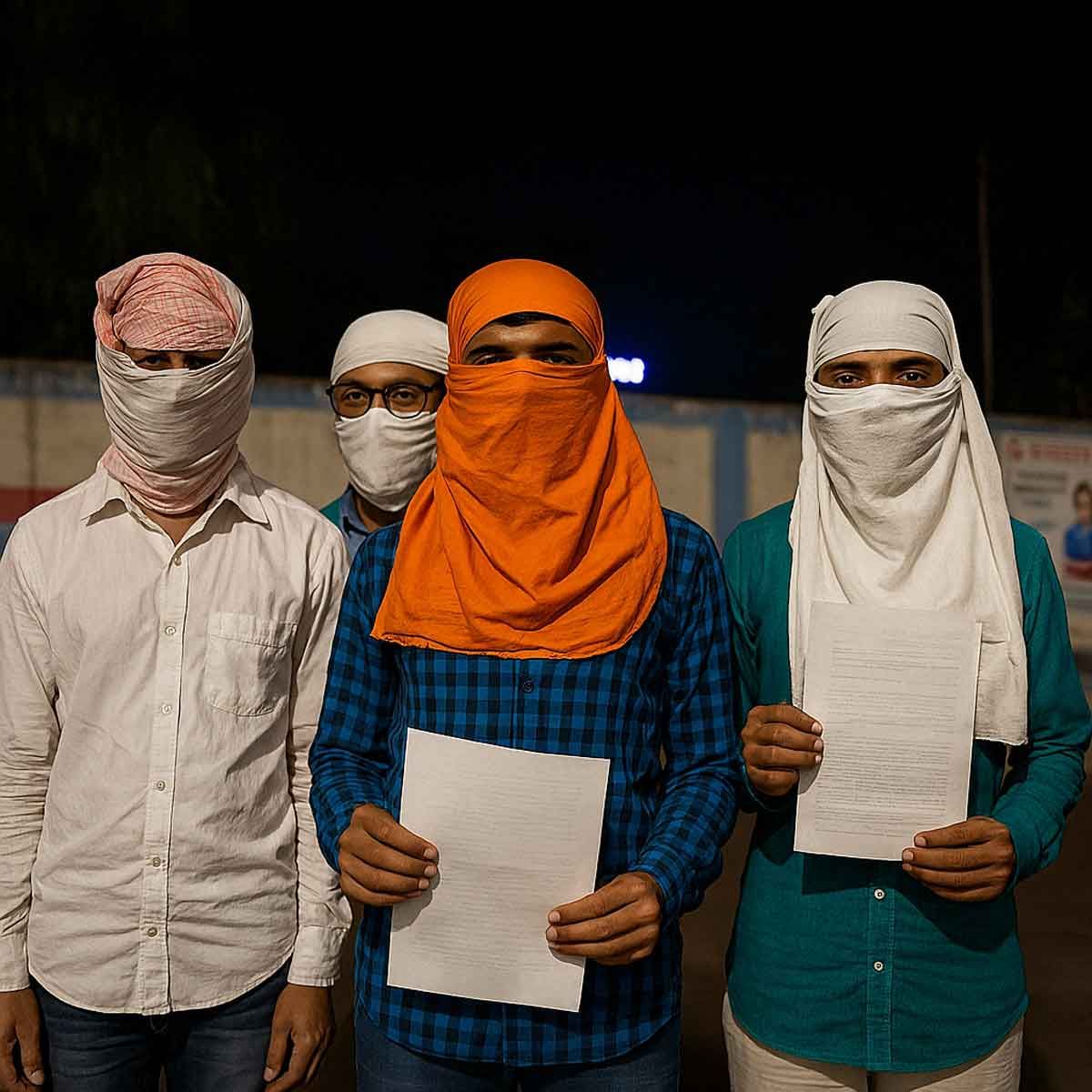More Coverage
Twitter Coverage
Satyaagrah
Written on
Satyaagrah
Written on
Satyaagrah
Written on
Satyaagrah
Written on
Satyaagrah
Written on
JOIN SATYAAGRAH SOCIAL MEDIA
"It is more important to influence people than to impress them": Indian rupee could be the new dollar, says Nouriel Roubini, Nicknamed as 'Doctor Doom' by Wall Street, he said overall there will be a process of de-dollarization over time

Synopsis | “The comparative advantage of India is not in traditional labor-intensive industries, not even in things like cars, tractors, or locomotives. It is in high-tech, it is in IT and within IT, there are products like iPhones and other types of tech products. Some of those productions may not be as labor-intensive as traditional manufacturing. Still, if you are going to give preference to subsidies to more traditional manufacturing, you are not going to.
|
“One can see how the Indian rupee could become a vehicle currency for some of the trade that India does with the rest of the world, especially South-South trade. It could be a unit of account, it could be a means of payment, it could become a store of value. Certainly, the rupee over time could become one of the variety of global reserve currencies in the world,” says Nouriel Roubini, Professor Emeritus at New York University Stern School of Business.
You may have observed that Indian policymakers are taking a lot of steps to beef up manufacturing. PLI was one. In this Budget also, we hiked capex overall and in railways. Do you think this is the right approach for infrastructure and manufacturing scale-up? What else would be required to scale up our manufacturing capabilities to global levels?
Developing a manufacturing base is important and having the right industrial policies is essential. However, India is at risk of making some mistakes. Mistake number one is that attracting global firms that produce for this market is good but you also need to have goods that are competitive in international markets.
Instead, what is happening in India is that the attraction of foreign capital is used as more like an import substitution industrialization, the restriction to tariff is on either raw materials, intermediate inputs, or final goods, which implies that actually if you are a foreign firm wanting to produce for the global market if the imported inputs are expensive, you cannot exploit the global value and supply chains are part of an integrated production process.
Going in the direction of protectionism of domestic firms and of domestic industries as opposed to production for export-led growth may be a challenge and the fact that India has not recently joined either FTAs or regional trade agreements is a signal that you are doing something slightly not right.
The other dimension is that the comparative advantage of India is not in traditional labor-intensive industries, not even in things like cars, tractors, or locomotives. It is in high-tech, it is in IT and within IT, there are products like iPhones and other types of tech products. Some of those productions may not be as labor-intensive as traditional manufacturing. Still, if you are going to give preference to subsidies to more traditional manufacturing, you are not going to exploit your comparative advantage with these technologies.
I am all in favor of industrial policy even of subsidies and so on but they have to be done clearly in a way that makes firms and products competitive in global markets rather than in a protected domestic market, and that is one risk you are facing.
|
How have you analyzed the steps taken so far by the central bank to keep the currency stable, tilting towards growth, while still making all efforts to manage inflation?
So far the RBI has done well. They thought that they probably were done with the last policy hike of 25 bps in February. Unfortunately, the data about headline inflation and core, since then have come up slightly higher than expected even if wholesale inflation is lower. There is a state of the world in which unfortunately inflationary pressure may be persisting, and therefore the RBI may be forced to hike slightly more and withdraw further liquidity if the world is a weaker one.
If the world is going to be one which will have financial pressure on the currency, on the balance of payment, and so on, then the policy trade-offs are going to be challenging because either you prevent the currency by doing forex intervention that has cost and benefits or you let the currency weaken.
If it weakens too much, that may be a source of important inflation or you can hike policy rates in a way that weakens economic growth. I think you have to manage it carefully. I would say that while the currency is weakened on a number of measures, real exchange or the equilibrium, there is probably still room for some depreciation, especially if we are thinking about having export-led growth either of manufacturing or also of services.
A gradually falling currency may not lead to significant imported inflation especially because some of your raw material like oil and energy from Russia is bought at discounted prices. And the benefit of having a slightly weaker currency like in the case of the Asian tigera, might outperform any kind of concerns about imported inflation. So maintaining a competitive currency should be one of the important objectives of the RBI.
We are trying to conduct international trade with a lot of partners across the world – be it Russia, Iran, Africa, parts of Southeast Asia. Do you see that gain momentum?
I am of the view that overall there will be a process of de-dollarisation over time. Part of it is the structure of the share of the global economy of the US. It has fallen from 40% to 20%. It does not make sense for the US dollar to be two-thirds of all international financial and trade transactions, part of it is geopolitics. The US is weaponizing the US dollar for national security and foreign policy objectives that, of course, makes the rivals of the US uncomfortable. But even some of the friends and allies of the US whether in the Middle East or even in Asia are a little bit queasy about that.
One can see how the Indian rupee could become a vehicle currency for some of the trade that India does with the rest of the world, especially the South-South trade. It could be a unit of account, it could be a means of payment, it could become a store of value. Certainly, the rupee over time could become one of the varieties of global reserve currencies in the world
That is amazing. You have made a comment that India has the potential to grow 7%. McKinsey says it is India's century. Some other similar agencies say it is India's decade. When you say 7% plus is our potential growth rate, what is the durability of that? Are we talking about many years of around 7% growth, is that possible?
Well, certainly it is possible. When China was growing very fast for three decades, it grew at about 10% and of course, with the aging population and catch-up of growth, once you reach middle-income levels, it is not sustainable. The per capita income of India is low enough that actually with reform certainly 7% is possible but even more than 8%.
But you have to do many more economic reforms that are structural to achieve that growth rate and if you achieve it, you could maintain it for at least a couple of decades but it depends very much on policies.
But at the same time, let us talk about some global challenges. In your recent book Mega Threats 2023 Beyond, what have you talked about as the three biggest threats for global policymakers and individual leaders of countries like ours? All of them have to bear in mind and have to make their policies anti-fragile so that these risks do not hamper their overall plans.
The one that is key is relevant for the world but also specifically for India is the issue of climate change. Under some scenarios, a good chunk of India would be either underwater or too hot to live, or subject to major natural disasters. So investing in the green economy, the green transition, and making energy more renewable or alternative to fossil fuel is going to be very important to have a better planet and a better world.
India is as much at risk as any other part of the world. The nexus of overall macroeconomic stability, maintaining low inflation, maintaining sustainable private and public debts, and external debts so that you do not have financial pressures that occur when you have excessive indebtedness is going to be a nexus of economics that maintains macroeconomic stability. It is required for stable economic growth.
The third one is really investing in a variety of capital – human capital, physical capital, infrastructure capital, institutional capital, and also global soft power as a way of sustained economic growth. The future of the world is digital and knowledge is innovation. The benefit of India is that it already has a comparative advantage in tech and it can do much more in those industries of the future. But good policy frameworks and implementation are necessary in order to achieve that particular success.
|
Rakesh Krishnan Simha
- Every country that has attempted to replace the dollar trade has been targeted by the West for regime change. Iraq was building a petroleum exchange. Libya had planned an African gold currency. Both countries are in ruins today. India needs to be careful because it has more traitors than Russia's entire population.
- As India's economy grows, Jehadis, Rice bags, and seculars will be used to spark riots, strikes, and protests nationwide. The West rose through exploitation. It won't fade away quietly.
- There is one section in the West that wants to work with India to take down the communist dragon in Beijing and the Jehadi threat to civilization.
- The other section is intensely anti-Hindu and wants to break up India. Since an alliance with China is out of the question, India must work with those Westerners who share our geopolitical interests.
- And in order to nullify the likes of the CIA, State Department, and the FBI (which recently clubbed India along with Russia and China as a "rogue nation") we must curb their ability to weaken India.
- First, defang the internal snakes - primarily the English-speaking secular elites. Raghuram Rajan, who mocked India with the "Hindu Rate of Growth", is an example of the coolie who will do the bidding of his Western masters when they snap their fingers at him.
- Next is the secular media based around Lutyens Delhi and which is available to the highest bidder. It is hardly a coincidence that the Raj has a Deep influence in India. The media crooks work with the secular elites. Often an interview with a State Department flunkey, a bottle of Scotch, or two pieces of fish at a comrade's house is enough to buy them.
- Most of the Ricebag population is loyal to the West. The vast majority of the 250 million Paxtanis in India are disloyal. Neither can be trusted. As Sterlite and Shaheen Bagh have shown, they are forever disloyal and willing to bring down India and destroy our economy and infrastructure. Giving such people the vote is harakiri. At some point, India must look at the option of a dictatorship form of Govt to neutralize this threat.
- Reduce the strength of the Western diplomatic strength to the bare minimum. The US embassy has historically meddled in the internal affairs of rival nations. American diplomats are reportedly behind the anti-Hindi agitation by MK Stalin in Tamil Nadu. The British too have strong links with the English-speaking elites.
- Running a country is not a joke. It's an existential matter. Living from election to election can be exhausting and frustrating for those taking India out of its 1,000-year-long chaos. All their hard work will be nullified by regime change. For example, the Golden Quadrilateral started by AB Vajpayee was abandoned by Sonia Gandhi.
- Saddam Hussein and Muammar Gaddafi built welfare states. Today their work is in shambles. Vladimir Putin transformed Russia from post-Soviet anarchy to stability and prosperity. The US-UK evil twins have been after him since 2014.
- If India doesn't defang its enemies, we will face the same fate. The late General Rawat warned of the "2.5 Front War" where the .5 comprises internal enemies. That section has now developed into a full threat so India now faces a 3 Front War. The more India rises, the greater the danger of destabilization. In order to neutralize the external threat, first deal with the internal enemy.
Rakesh Krishnan Simha is a New Zealand-based journalist and writes on defence and foreign affairs for Russia Beyond the Headlines, a global media project of Moscow-based Rossiyskaya Gazeta. He is on the advisory board of Europe-based Modern Diplomacy. Rakesh’s articles on defence and foreign have been quoted extensively by a number of leading think tanks, universities, and publications worldwide. He has been cited in books on counter-terrorism and society in the global south.
 Support Us
Support Us
Satyagraha was born from the heart of our land, with an undying aim to unveil the true essence of Bharat. It seeks to illuminate the hidden tales of our valiant freedom fighters and the rich chronicles that haven't yet sung their complete melody in the mainstream.
While platforms like NDTV and 'The Wire' effortlessly garner funds under the banner of safeguarding democracy, we at Satyagraha walk a different path. Our strength and resonance come from you. In this journey to weave a stronger Bharat, every little contribution amplifies our voice. Let's come together, contribute as you can, and champion the true spirit of our nation.
 |  |  |
| ICICI Bank of Satyaagrah | Razorpay Bank of Satyaagrah | PayPal Bank of Satyaagrah - For International Payments |
If all above doesn't work, then try the LINK below:
Please share the article on other platforms
DISCLAIMER: The author is solely responsible for the views expressed in this article. The author carries the responsibility for citing and/or licensing of images utilized within the text. The website also frequently uses non-commercial images for representational purposes only in line with the article. We are not responsible for the authenticity of such images. If some images have a copyright issue, we request the person/entity to contact us at This email address is being protected from spambots. You need JavaScript enabled to view it. and we will take the necessary actions to resolve the issue.
Related Articles
- White Evangelical Resistance Is Obstacle in Vaccination Effort
- 'Badhai ho India': India crosses one billion vaccination milestone
- Dr Fauci, Peter Daszak and more: The damning involvement of American scientists and bureaucrats in suppressing truth about Covid origins
- Facing an economic crisis Nationalist Pakistanis are loathing Saudi Arabia, and they have solutions for all the obstacles: Nukes and opium
- Washington Post author supports inclusion of kinks in Pride marches, celebrates taking her minor children to Pride rallies attended by kinksters in gay bondages
- Japanese princess Mako lost royal status for marrying a commoner Kei Komuro
- Big Liberals, small hearts: By donating 80 vials of vaccine, America has proved to be the poorest country in the world
- Video evidence shows there were live bats in Wuhan lab, DRASTIC exposes Peter Daszak again
- The Balliol college at the University of Oxford has dedicated a new building after Dr. Lakshman Sarup, the first candidate at Oxford to pass his thesis for a Doctorate of Philosophy (DPhil) degree on Sanskrit treatise on etymology
- Modi govt announces incentive scheme for RuPay and BHIM-UPI after Visa complained to US govt about Indian govt promoting RuPay
- “Covid-19 virus is from China and it was intentionally leaked by China’s CCP” says Chinese virologist
- Group of Wuhan scientists have sounded alarm bells of a new variant ‘NeoCoV’ which is highly infectious and virulent, leading to the death of 1 in 3 patients if infected
- China's 39 Air Force aircraft breached the air defence zone of Taiwan on Sunday as the largest incursion in Taiwanese territory since Oct 2021: Aggression of Communist regime continues
- ‘Go to haram restaurants and poison their food’: Ex-Australian ISIS bride now lives a free life in Turkey. Details
- Farmers Truck protest is a new swag worldwide now: Canadian PM Justin Trudeau goes in hiding with family in a secret ‘undisclosed’ location after thousands of truckers carried out protests over vaccine mandates




























